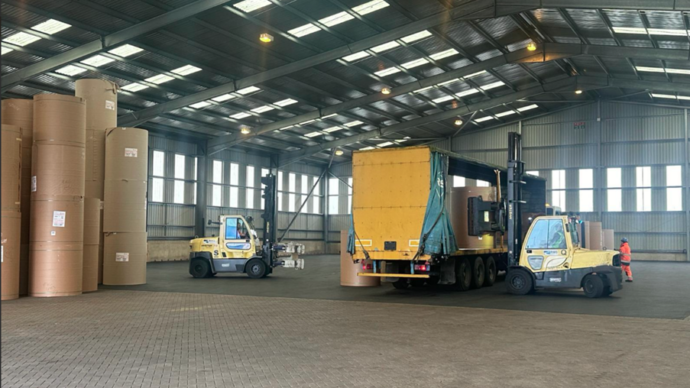NEWS
The importance of effective communication between ports and hauliers
Campaigns |Published: Dec 5, 2024

Effective communication between ports and hauliers is a critical element in maintaining smooth operations and enhancing safety in port environments. As key players in the global supply chain, hauliers are responsible for the transportation of goods to and from ports, often navigating busy, complex environments with strict safety protocols. Ensuring that hauliers are well-informed, and aware of operational standards significantly reduces risks and optimises operational efficiency.
Safety standards and protocols
Ports are high-risk environments with a high volume of traffic, including vehicles, pedestrians, and heavy plant and equipment. Effective communication ensures hauliers understand the safety protocols necessary to protect both themselves and other workers. Clear, concise communication—whether via signage, digital platforms, or video tutorials—helps hauliers familiarise themselves with the port layout, identify potential hazards, and adhere to safety measures such as restricted zones for pedestrians and specific routes for vehicles.
Operational efficiency
When hauliers are provided with accurate, timely information about port operations, traffic management plans, and scheduling, they can optimise their routes and reduce unnecessary delays. Digital accessibility is a key way ports help hauliers navigate the complex and ever-changing environment of large terminals. The use of such tools significantly reduces confusion, improves turnaround times, and enhances overall efficiency.
Multilingual support
Ports serve an international community of hauliers, many of whom may speak different languages. To ensure that all hauliers receive the same standard of safety and operational information, ports must offer multilingual support. Translating key materials — such as safety leaflets, videos, and training resources — into multiple languages ensures that hauliers from diverse backgrounds can understand and comply with port regulations.
Building relationships and engagement
Strong communication between ports and hauliers fosters a sense of partnership, which is essential for addressing issues and improving operational processes. Ports should engage with hauliers regularly, using surveys and feedback to continuously improve the port experience. Gathering insights on hauliers’ needs, concerns, and challenges allows ports to make informed decisions about how to improve safety, efficiency, and overall service quality.
Compliance with legal and regulatory requirements
Effective communication helps ensure that hauliers comply with relevant safety, environmental, and regulatory standards. Clear communication of the rules helps prevent confusion and avoids operational disruptions.
Hutchison Ports provides induction videos in multiple languages for drivers, ensuring that all hauliers are equipped with the safety knowledge they need before entering the port. This practice has been crucial in reducing accidents and improving safety compliance. They also use mobile apps and digital signage to communicate real-time updates to hauliers about docking schedules, route changes, and areas of congestion and provide haulier induction materials in different languages ensuring that language barriers do not hinder safety or operational efficiency.
The TT Club highlights that ports should clearly communicate customs requirements and pre-lodgement rules to hauliers to avoid unnecessary congestion and compliance issues, particularly in post-Brexit trade environments. For example, ports using a pre-lodgement model* must ensure hauliers have lodged customs declarations before goods arrive to prevent bottlenecks.
Resources
Hutchison Ports – Haulier induction and communication practices.
Hutchison Ports has developed a comprehensive system for haulier communication, including multilingual safety induction videos and mobile apps for real-time updates. These resources demonstrate how ports can enhance communication to improve safety and operational efficiency.
* A pre-lodgement model is a customs process requiring traders to submit declarations and pay any duties before goods arrive at a port or border. This system streamlines customs clearance, reducing delays by ensuring that documentation is pre-verified. Commonly used in ports and post-Brexit border arrangements, it helps manage traffic flows by allocating resources to pre-approved goods while supporting compliance with trade regulations. The approach is particularly effective in busy environments where time efficiency is critical.
